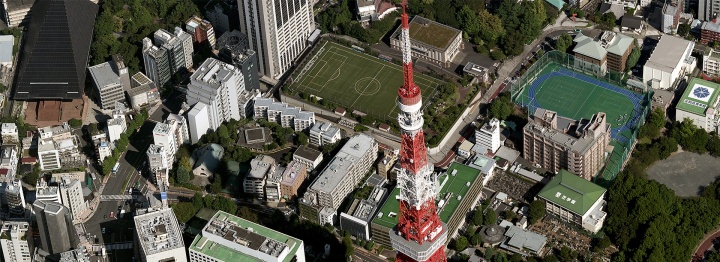

Japan Aerial Imaging Market Size and Growth Overview (2025-2033)
Market Size in 2024: USD 177.4 Million
Market Forecast in 2033: USD 345.6 Million
Market Growth Rate 2025-2033: 7.7%
According to IMARC Group's latest research publication, "Japan Aerial Imaging Market: Industry Trends, Share, Size, Growth, Opportunity and Forecast 2025-2033", the Japan Aerial Imaging Market size reached USD 177.4 Million in 2024. Looking forward, IMARC Group expects the market to reach USD 345.6 Million by 2033, exhibiting a growth rate (CAGR) of 7.7% from 2025-2033.
Download a sample PDF of this report: https://www.imarcgroup.com/japan-aerial-imaging-market/requestsample
How AI is Reshaping the Future of the Japan Aerial Imaging Market?
Japan uses artificial intelligence (AI) more for aerial photography and imagery analysis. AI permits rapid object identification. AI permits change detection in terrain or land use. AI permits other tasks that would take humans much longer. This improves accuracy. This improves efficiency. Machine learning decides in real-time within drone and satellite systems. Machine learning responds to disasters, monitors infrastructure, and farms with precision, among other uses.
Artificial intelligence, advanced sensors, and imaging technologies combine to advance predictive analytics in aerial imaging. Using deep learning techniques, huge amounts of data can be analyzed so as to reveal patterns and allow for predicting environmental changes, optimizing urban planning, and improving resource management strategies. AI-driven automation also makes aerial imaging services affordable with accessible. This democratization of high-quality geospatial information crosses sectors. These sectors range from agriculture to transportation.
AI can enable more advanced UAVs. These UAVs have autonomous flight planning and obstacle avoidance capabilities. It can also enable new ways to capture images, such as computer vision algorithms that can control other parameters of a camera based on factors such as the surrounding lighting or the characteristics of the terrain. These technologies are allowing Japan's aerial imaging industry to be competitive and explore new commercial opportunities, and contribute to smart city and environmental protection initiatives throughout the country.
Japan Aerial Imaging Market Trends & Drivers
The Japanese market for aerial imaging has been expanding in recent years with the advances in camera technology, such as the increase in high-resolution cameras, improvements in LiDAR systems (Light Detection and Ranging,) and the rise of multispectral imaging systems. As UAVs have become more widely available for aerial photography, they are now an alternative to customary aerial imaging for professionals in Japan. This has increased the affordability and capability to collect aerial imaging data in remote areas or where customary aerial imaging would be less practical.
There is a growing demand for aerial imaging in agriculture and other industries. Farmers are utilizing aerial imaging for precision agriculture and crop health monitoring. Aerial imaging is being used by urban planners for smart city development. The construction and real estate industries are two major users of aerial images for site surveys and project documentation purposes. Aerial imaging is also used in the ecosystem conservation and management industry for ecosystem monitoring. Market growth is expected to be driven by government initiatives to adopt aerial imaging technology in the construction of infrastructure and disaster management, and Japan being a market leader in the region.
Japan Aerial Imaging Industry Segmentation:
The report has segmented the industry into the following categories:
Aircraft Type Insights:
Camera Orientation Insights:
Application Insights:
End Use Sector Insights:
Regional Insights:
Request a Customized Version of This Report for Deeper Insights: https://www.imarcgroup.com/request?type=report&id=19292&flag=E
Competitive Landscape:
The market research report offers an in-depth analysis of the competitive landscape, covering market structure, key player positioning, top winning strategies, a competitive dashboard, and a company evaluation quadrant. Additionally, detailed profiles of all major companies are included.
Recent News and Developments in Japan Aerial Imaging Market
Future Outlook
The Japan aerial imaging market is set for strong growth driven by advances in AI, sensor technology, and drone capabilities. These innovations are expanding applications in smart cities, disaster management, and sustainability. With improving regulations and lower costs, aerial imaging is becoming a standard tool across government, commercial, and research sectors, positioning Japan as a regional leader in geospatial innovation.
Key highlights of the Report:
Note: If you require specific details, data, or insights that are not currently included in the scope of this report, we are happy to accommodate your request. As part of our customization service, we will gather and provide the additional information you need, tailored to your specific requirements. Please let us know your exact needs, and we will ensure the report is updated accordingly to meet your expectations.
About Us:
IMARC Group is a global management consulting firm that helps the world's most ambitious changemakers to create a lasting impact. The company provides a comprehensive suite of market entry and expansion services. IMARC offerings include thorough market assessment, feasibility studies, company incorporation assistance, factory setup support, regulatory approvals and licensing navigation, branding, marketing and sales strategies, competitive landscape and benchmarking analyses, pricing and cost research, and procurement research.
Contact Us:
Street: 563-13 Kamien
Area: Iwata
Country: Tokyo, Japan
Postal Code: 4380111
Email: sales@imarcgroup.com
